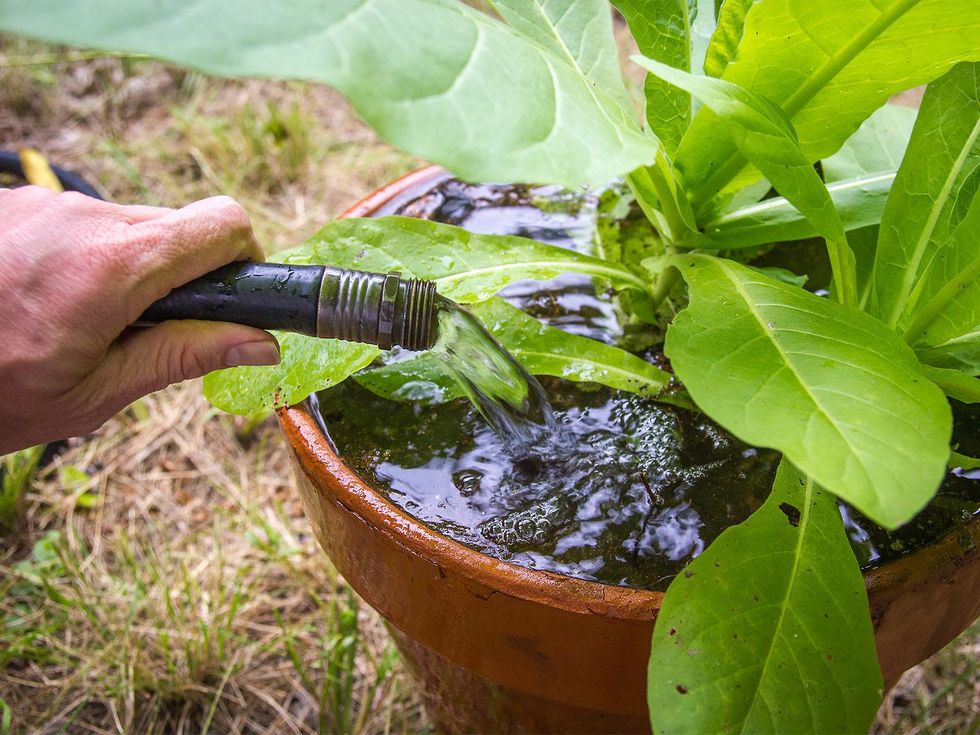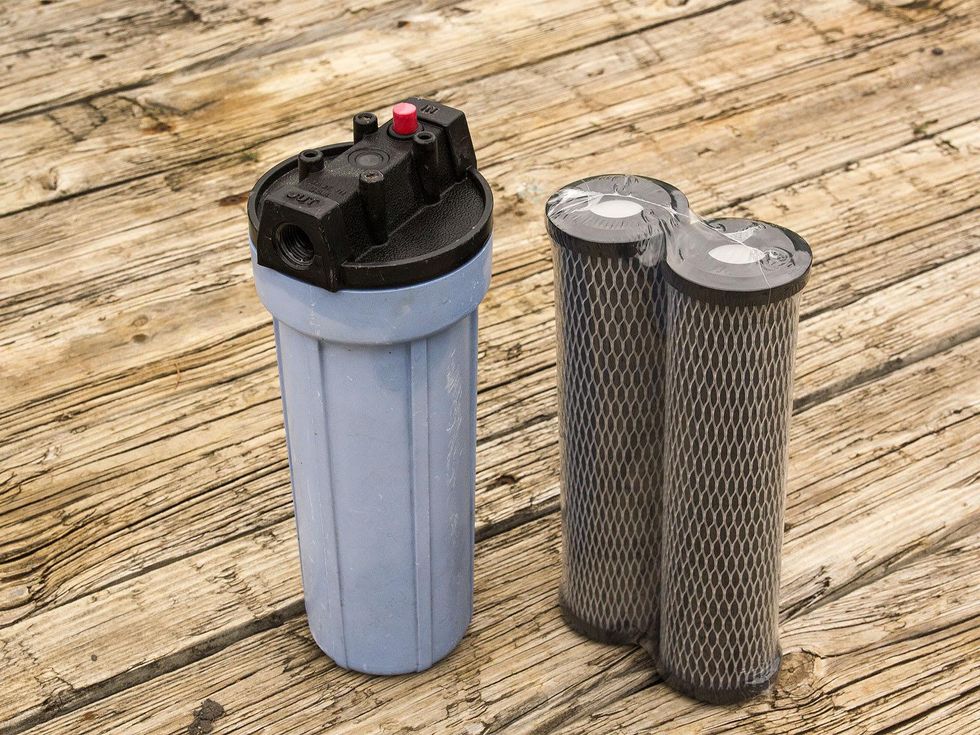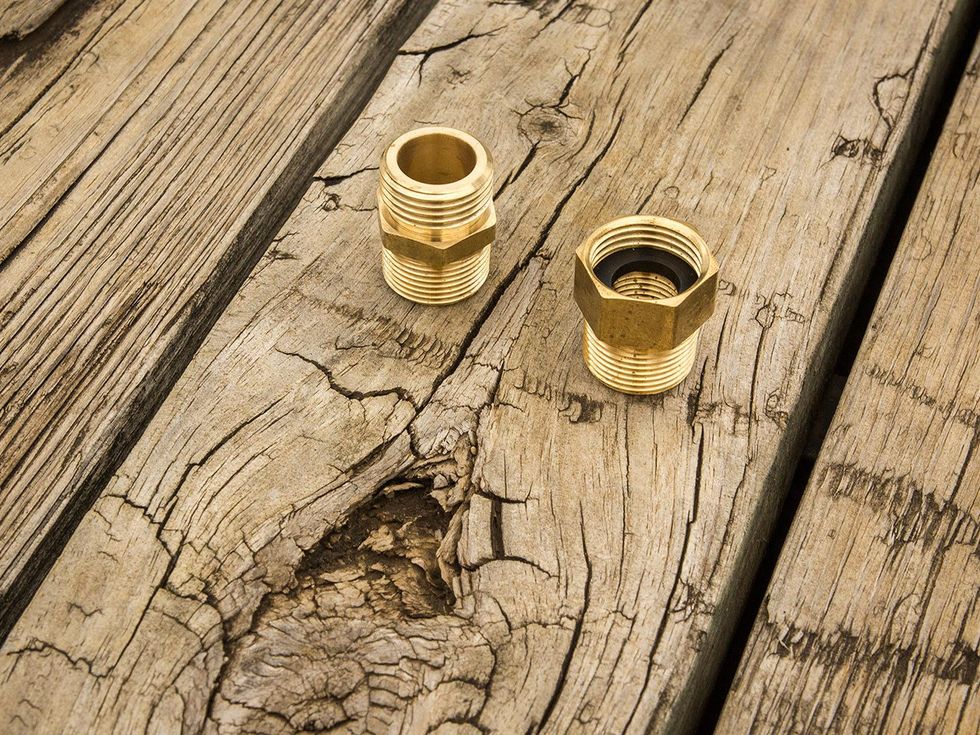The Farmer Diaries
Texas farmer saves plants with everyday water filter
Rainwater beats all other forms of water for watering crops. But it is not always infinite in supply. Before my father added two new tanks this year, expanding our rainwater storage capacity by 8,000 gallons, we'd start to deplete our reserves by August.
As our tank levels dropped, we saved our premium rainwater for specialty melon crops and used tap water for everything else. The switch to tap water was always noticeable in potted plants — first by the acrid smell of chlorine that poured out from the garden hose; then, days later, by yellowing leaves. Some simply died. They needed water, but apparently tap water was inadequate.
Of course, tap water must be purified or else it would spread disease. But the disinfecting chlorine compounds in our tap water kept killing even after the water left the spigot.
After we started filtering our tap water, the health of the surviving potted plants began improving right away.
To me, it seemed that the chlorine compounds were both directly killing my plants and making life for them difficult by reducing the population of the soil microbes the plants needed to survive. Research in sustainable farming practices has disproved industrial agriculture's notions of soil as just a medium for plant roots. Rather, it's an ecosystem of bacteria, fungi, nematodes and even viruses that live in symbiotic relationships with the plants.
Soil microorganisms make nutrients available to plants by digesting buried matter and fixing atmospheric nitrogen to plant roots. This nourishes plants, while also making them resistant to drought and disease. In turn, plant roots exude simple sugars through their roots that feed the microbes.
Heavily chlorinated water kills these microbes and shuts down this process.
I've read that microbe populations can recover within days after chlorinated water ceases to be used. But as my many potted plants required daily watering, there was no opportunity for the microorganisms to make their comeback. I suspected that what was true for my potted plants was also true for the crops in my raised beds. So I looked into buying a garden hose water filter to reduce the amount of chemicals pouring out with the tap water.
Ready-made filters designed for garden hoses were expensive. Some cost as much as $75 but were rated to filter no more than 20,000 gallons, after which the whole plastic unit had to be thrown away. To replace such a filter, another would need to be purchased for full price.
What all the options had in common was their use of activated charcoal, just like the drinking water filter units you can buy for your home for less than $20. These units are designed to be mounted under a sink and plumbed between a water valve and a special faucet that mounts on the countertop.
But with a few copper garden hose adapters, these units can be converted into a garden hose filter with a 15,000-gallon capacity. Once the filter is used up, only the cartridge inside needs to be replaced. These can be bought in packs of two for about $12.
I had two old filter units already, so I gave them to my father and told him how I wanted to convert them. In one trip to the store, he found all he needed. The two copper garden hose adapters cost less than $9 together, and with two turns of thread seal tape wrapped around their threads, they fit perfectly into the filter housing and allowed the unit to be connected between two garden hoses. Once we connected our filter, the result was immediately noticeable as the sharp odor of a shock-treated swimming pool was missing from the water that poured out.
After we started filtering our tap water, the health of the surviving potted plants began improving right away. It was no longer impossible to keep them alive through the hottest part of summer.
The charcoal also filters out Atrazine, a common herbicide that has contaminated almost every source of drinking water in the country.
Reducing the amount of chlorine and herbicides in our tap water relieved our plants of the multiple pressures that afflict them, helping them to deal with the remaining stress of hot, dry air and intense sunlight.



